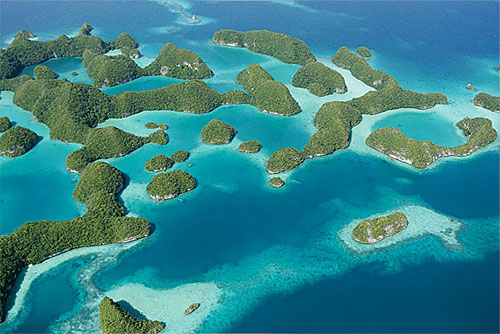|
|
Palau Travel Attractions
|
Article Intro
Visiting Palau can be a great experience and a tour of lifetime if you organize your trip in the right way and contact the right travel agent with local knowledge and experience. Read the below mini-guide to plan your Palau trip in advance.
|
In 1994, the Republic of Palau officially became an independent nation and was recognized by the UN. However, it retains close ties with the United States under the Act of Free Association, receiving strong financial support from Washington.
Koror is the economic center and the former capital of Palau, located on the same island. Now it is a much less vibrant city, with a complete absence of crowds and bustle. Here, you can still find the remnants of the traditional past, but at best this city is a good place to relax for just a day or two. The main attraction of the city is the Palau National Museum, quite a good place to get acquainted with the national culture and history. Here you can find a number of interesting natural and ethnographic displays. The Dolphin Centre off the coast of Koror is also noteworthy, just as the International Center for the Study of coral reefs with a beautiful aquarium. The best resort of the country is Palau Pacific Resort with a wide range of entertainment and a first class dive center. One of the most famous dive sites is Blue Corner, where you can see any sea creature, an incredible variety of fish and shellfish, sharks, soft and hard corals. A comprehensive tour of Koror can be ordered from one of selected Palau tour operators.
The famous Rock Islands are not far from Koror. It is one of the best places for outdoor activities in the Pacific. Limestone cliffs of the island group are covered with vegetation. The local waters are considered one of the most affluent places on earth, the recognized Mecca of divers. The main point of attraction here is the famous coral wall Ngemelis, starting at the water surface and extending to a depth of 300 meters. The Rock Islands are famous for their white coral sand, caves with stalactites and underground canals, ancient petroglyphs, and other traces of ancient peoples.
Malakal Island lies opposite Koror and is famous for its Micronesian Mariculture Exhibition Centre. Along with the impressive Maritime Museum of the International Center for the Study of coral reefs, it also houses the Marine Research Laboratory, occupied in preserving the natural environment of the Pacific.
Babeldaob is the largest island in all of Micronesia after Guam. This is a tall and very beautiful volcanic island with a green hilly landscape, a small strip of sand dunes, dozens of tiny freshwater lakes, beautiful sandy beaches in the area of the east coast and mangrove forests in the west. Partly overgrown with jungle, the island is still virtually unexplored, and many of the tiny villages in the forest are still connected to the ancient stone paths, whose age is at least a thousand years.
The northern end of the island reaches an open area known as Badrulchau. The main attraction of this area are rows of large basalt monoliths, placed here, according to legend, by the gods themselves. On the east coast of the island there lies a tiny new capital, Melekeok. It is home to just 9000 people. The main decoration of the city is Capitol building, reminiscent of the architecture of the same structure of the U.S. capital. Another attraction is Ngardok, the largest natural freshwater lake in all Micronesia. The island of Peleliu is the third largest island of Palau in terms of the population. It is a strip of coastal forest with a narrow ridge of hills. Peleliu Wall reefs are one of the best dive sites in the world, and White Beach is a perfect place for snorkeling.
Contact your Palau travel agent to request a travel circuit and a free quotation to have a comfortable tour.
 |
| Palau, an island state in the Pacific |
|
|
|
| | | |